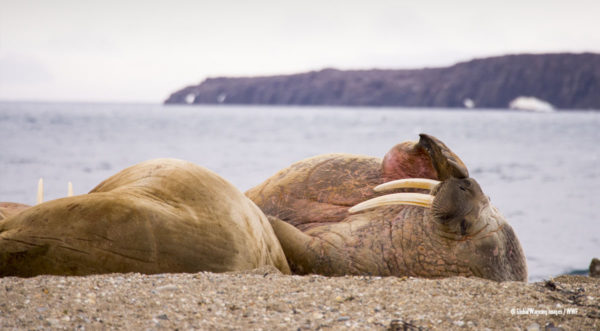5 things you didn’t know about Atlantic walrus
How much do you know about the tusked giants that live along Canada’s northern shores? Here are five amazing facts about Atlantic walruses, including how you can help them:

- Walruses are benthic foragers, which means they primarily eat shellfish like mollusks and crustaceans along the bottom of the ocean. To find their food, they can dive up to 90 metres and hold their breath for up to 30 minutes.
- Tusk size is very important within the walrus social hierarchy. Both males and females have tusks, and those with the largest tusks tend to sit at the top of these hierarchies. In fact, a broken tusk can seriously reduce a walrus’ social standing.

- Speaking of tusks, these overgrown canine teeth serve multiple purposes for walruses, including: self-defence when challenged by another walrus or predator; hooking onto ice floes to float when tired; and pulling themselves out of the water.
- Once female walruses give birth, they form new herds with other mothers and their babies. After the babies have matured and separate from their mothers, the females return to their original herds to mate once again.
- Some of the greatest threats to Atlantic walruses include: shrinking sea ice due to climate change and increasing noise in their haulout sites (areas where they congregate in large groups). With your help, WWF-Canada is creating long-term conservation solutions like minimizing disturbances to these haulout sites and protecting their Arctic habitats from oil and gas development.
Learn more and help Atlantic walrus thrive today!
